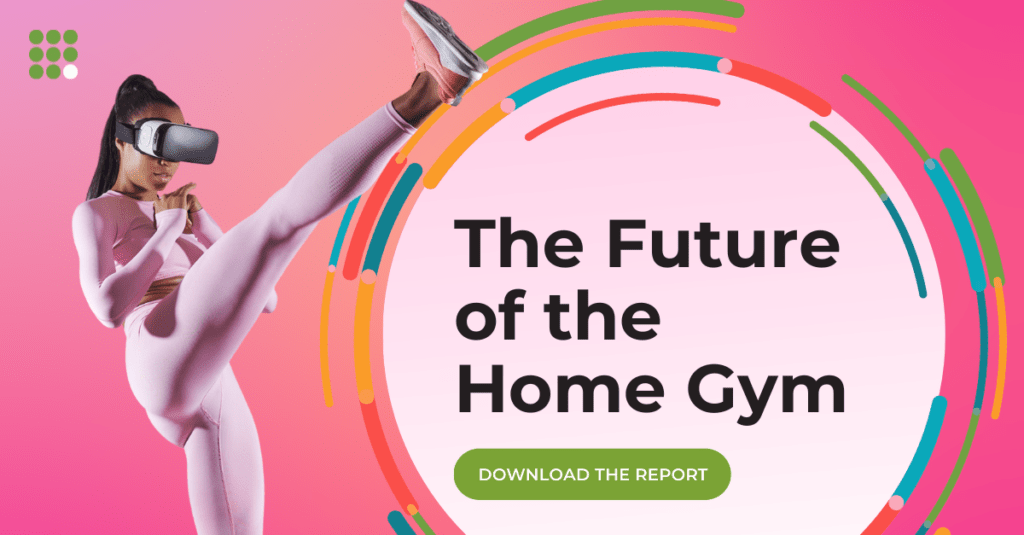Singapore, known as the “Lion City,” is a thriving economic hub in Asia with one of the highest GDP per capita globally, showcasing immense purchasing power.
The city-state thrives on digital savviness, surpassing regional averages in internet and mobile penetration, making it a goldmine for digital marketers eyeing Southeast Asia. However, the key to capturing this market is understanding local consumer behavior influenced by a rich blend of cultures and traditions.
There were 5.79 million internet users in Singapore in January 2024. Singapore’s internet penetration rate stood at 96% of the total population at the start of 2024.
Source: Data Reportal
Singapore’s consumers demand quality, value, and social responsibility, relying heavily on digital platforms for purchasing. For marketers, success hinges on a localized strategy that deeply respects and integrates these cultural nuances, ensuring they engage effectively without stepping on cultural toes.
Singapore’s Socio-Economic Landscape
A Brief History and Economic Development of Singapore
Singapore’s transformation from a British colonial trading post in 1819 to a leading global financial hub shows its remarkable economic development. Gaining independence in 1965, Singapore quickly diversified its economy, focusing on export-driven industries, such as electronics, manufacturing, and services, which propelled its GDP growth.
Today, Singapore is lauded for its high level of economic freedom, ease of doing business, and innovation, attracting multinational corporations and investors seeking a stable and prosperous base in Asia.
In 2024, Singapore held its position as the world’s most free economy.
Source: The Heritage Foundation’s Index of Economic Freedom
Demographic Overview
- Population Size and Diversity
Singapore’s population is approximately 6.03 million and mainly comprises ethnic Chinese (the largest group), Malays, Indians, and Eurasians. This ethnic diversity is the foundation of Singapore’s multicultural society. The city-state is also home to many expatriates and foreign workers, contributing to its cultural melting pot and influencing consumer trends and demands.
- Age Distribution and Life Stages
Singapore’s population is aging, with a median age of around 43.1 years. The aging population poses challenges and opportunities for marketers, as the needs and preferences of older consumers differ from those of younger demographics. Simultaneously, the youth and working-age population are tech-savvy and highly educated, shaping trends in digital consumption, lifestyle, and leisure activities.
Multiculturalism and Its Impact on Consumer Behavior
Singapore’s multiculturalism significantly impacts consumer behavior, affecting everything from culinary preferences to spending on festivals. Marketers must navigate these cultural nuances to appeal to a broad spectrum of consumers. For instance, festive periods like Chinese New Year, Hari Raya, Diwali, and Christmas see spikes in consumer spending, with tailored marketing campaigns driving significant sales. The diversity also affects everyday consumption patterns, from food and fashion to media and entertainment, requiring brands to offer various products and services to cater to varied tastes and preferences.
Major international chains like McDonald’s go the extra mile to resonate with local tastes, introducing seasonal items like the Prosperity Burger during the Lunar New Year and blending global fast food culture with local traditions. These limited-time offerings satisfy culinary curiosity and generate excitement around fast food brands, further cementing their place in Singapore’s dynamic food scene.
Source: McDonald’s Facebook page
Consumer Behavior in Singapore
Purchasing Power and Expenditure Patterns
- Income Distribution and Spending Habits
Singapore’s GDP per capita is among the highest globally, reflecting its residents’ strong purchasing power. However, income distribution varies, with a significant proportion of wealth concentrated among the top earners. Despite this, the middle class in Singapore is substantial and exhibits robust spending behavior. Consumers prioritize value for money, quality, and brand reputation in their purchasing decisions. Expenditure trends indicate a balanced mix of saving and spending, with significant investments in education, healthcare, and housing.
Source: Singapore Department of Statistics | Key Household Income Trends, 2023
- Luxury vs. Practical Spending Trends
Luxury brands find a welcoming market in Singapore, thanks to the affluent segment willing to spend on high-end goods, from designer apparel to luxury cars and watches. Yet, there’s a growing trend toward practical and conscious spending among the wider population. This shift is partly driven by a more environmentally aware and health-conscious consumer base that prefers quality and sustainability over ostentation. Brands that blend luxury with sustainability or offer premium quality at accessible prices tend to perform well.
About half of consumers in Singapore plan to purchase luxury goods in the next 12 months.
-Source: YouGov Survey 2023
- E-commerce Adoption Rates
Singapore has one of Southeast Asia’s highest e-commerce adoption rates, accelerated by the COVID-19 pandemic. Many people shop online, driven by convenience, variety, and competitive pricing. The government’s push toward a Smart Nation has further facilitated this, enhancing digital infrastructure and literacy across all age groups.
GSMA Intelligence reported 9.78 million cellular mobile connections in Singapore at the start of 2024.
The number of connections increased by 4.9% from 2023. However, the total number of mobile connections was equivalent to 162.2% of the population, as many people use multiple mobile connections for personal and work purposes.
- Preferred Online Platforms and Payment Methods
Online shopping has become increasingly popular in Singapore, with platforms like Lazada, Shopee, and Amazon offering a wide range of products from both global and local brands. Consumers often visit online marketplaces for specific needs, such as RedMart for groceries and Zalora for fashion. Mobile payment solutions and digital wallets like PayLah!, PayNow, GrabPay, and Google Pay are also gaining traction due to their convenience and security, supplementing traditional credit and debit card payments. Cashless transactions are becoming more popular, with over 90% of Singaporean stores embracing them.
- Popular Platforms among Singaporeans
Social media is pivotal in shaping Singaporean consumers’ preferences and purchase decisions. Platforms like Instagram, Facebook, and YouTube are widely used for entertainment, information, and social interaction.
DataReportal’s figures show that there were 5.13 million active social media user identities in Singapore in January 2024.
The popularity of these platforms has given rise to influencer marketing, with brands leveraging popular content creators to reach and engage potential customers. Influencers often serve as trendsetters, especially in the fashion, beauty, and lifestyle sectors, making them an essential component of modern marketing strategies in Singapore.
- Impact on Consumer Decisions and Brand Loyalty
The influence of social media influencers on consumer decisions in Singapore is significant. Consumers, particularly millennials and Gen Z, trust influencers nearly as much as they do their acquaintances, making influencer endorsements a powerful tool for brands. Influencers help brands achieve a more human and relatable connection with their audience, which can significantly impact brand loyalty. For instance, when influencers share their genuine experiences with a product or service, it can sway their followers’ purchasing decisions and enhance the brand’s credibility.
The strategic use of social media platforms for customer engagement, such as through interactive content, live streams, and user-generated content campaigns, further cement brand loyalty. Brands adept at creating meaningful and engaging content tailored to the preferences of Singapore’s diverse audience tend to see higher engagement rates and customer retention.
Three Key Areas that Continue to Shape Consumer Preferences in Singapore
- Hawker culture and the love for fast food.
Singapore’s vibrant hawker culture, dating back to the 1800s, began with the city’s transformation into a key port. Originally, street hawkers from diverse backgrounds like China, India, Malaysia, and Indonesia took to hawking for its low startup costs. Today, the government has revamped this tradition by setting up centralized hawker centers that maintain high hygiene standards and give customers a front-row seat to what goes on behind making various dishes.
Singapore’s international fast food journey started in 1968 with the arrival of Allen & Wright (A&W). This American franchise marked the beginning of a transformation, leading to the presence of global giants like KFC in 1976 and McDonald’s in 1979. Over the years, the market has evolved with newcomers like Hardee’s, Baskin-Robbins, and the game-changer Pizza Hut in 1986, introducing the convenience of pizza delivery. Today, Singapore boasts over 80 KFC fast food outlets, catering to millions of locals every month. McDonald’s leads the 2023 QSR Rankings, closely followed by home-grown Kopitiam, with KFC and Subway not far behind. Amidst the flurry of international flavors, Singapore’s fast food scene offers a unique blend of taste, affordability, and accessibility, maintaining a delightful balance with the traditional hawker centers and food courts that are the heart and soul of Singapore’s rich culinary heritage.
- A vibrant mall culture.
In Singapore, malls are more than just shopping destinations; they’re the vibrant pulse of community life. From the iconic Orchard Road to cosy neighborhood centers, these spaces offer a unique blend of shopping, dining, and socializing, reflecting the spirit of Singaporean society. Despite the pandemic’s challenges, Singapore’s mall culture has endured and evolved. With a bounce back in retail sales reported in 2021, malls have adapted to become safer, more engaging spaces, integrating virtual experiences and community events. This resilience underscores the enduring appeal of mall culture in Singapore, now a testament to the island’s ability to blend tradition with innovation in creating inclusive, communal spaces for everyone.
- An emphasis on education.
Singapore’s education system shines globally, consistently topping the OECD PISA rankings. This shows the commitment of the Ministry of Education (MOE) to prepare students for a fast-evolving, digital world. This vision has seen a steady increase in government spending on education.
However, the pursuit of academic excellence extends beyond the classroom. Many students participate in after-school enrichment and tuition, viewing it as essential for success in Singapore’s highly competitive academic world.
While public education is subsidized, private tuition doesn’t come cheap, with families investing significantly. According to Statista, in 2022 alone, private spending on education hit a staggering 8.37 billion Singapore dollars. This blend of public support and private investment underlines Singapore’s high stakes and high expectations placed on education.
The emphasis on education in Singapore presents significant opportunities for brands. With substantial investments in education, there’s a market for products and services that deliver quality educational outcomes. Brands can leverage this by offering educational tools and technologies that meet high consumer standards. The move toward digital education underscores the demand for tech solutions that improve learning experiences. Additionally, the spending on private tuition indicates a demand for premium educational services and resources.
Beyond education, this focus on academic excellence influences consumer preferences across various product categories, including tech gadgets, educational toys, and wellness products to boost cognitive performance and well-being.
Understanding Segment-Specific Preferences and Behaviors
- Product and Brand Preferences
Singapore’s diverse consumer segments exhibit distinct preferences in brands and products. For instance, the tech-savvy segment gravitates toward innovative and high-quality tech products, while eco-conscious consumers prefer brands with strong sustainability credentials. Similarly, younger consumers prioritize experiential spending, technology, and sustainability, whereas older demographics may focus on health, wellness, and traditional media. Ethnicity influences preferences in food, media, and cultural products, necessitating nuanced marketing approaches. Understanding these preferences enables brands to tailor their product offerings and marketing strategies to meet each segment’s needs and values.
- Media Consumption Habits
Media consumption in Singapore varies by demographic and lifestyle segment. Traditional media, such as television and newspapers, still sway older demographics, while younger consumers prefer digital platforms, including social media and streaming services. Tailoring marketing campaigns to the media habits of each segment ensures higher visibility and engagement.
Read our blog here for more details on five key consumer segments in Singapore.
Marketing Strategies for Brands in the Singapore Market
Localization Strategies
- Adapting Products and Messaging to Local Tastes
Success in Singapore’s market often hinges on a brand’s ability to adapt its products and messaging to resonate with local tastes and preferences. This can involve tailoring flavors for food and beverage products, adjusting product sizes and packaging for local living conditions, or incorporating local languages and slang into marketing materials. For example, international food brands have found success by offering locally inspired menu items that cater to Singaporean palates.
- Cultural Sensitivity and Brand Positioning
Understanding and respecting Singapore’s multicultural society is crucial for brand positioning. Marketing campaigns should be designed with cultural sensitivity, celebrating local festivals and holidays across different ethnic groups to foster inclusivity. Brands that navigate these cultural nuances effectively can position themselves as respectful and thoughtful, winning the hearts of Singaporean consumers.
Digital Marketing Tactics
- SEO and Content Marketing for Singapore’s Audience
Search Engine Optimization (SEO) and content marketing tailored to Singapore’s audience are vital for digital visibility. This involves using local dialects and search terms in content, understanding peak online activity times, and creating locally relevant content that addresses the interests and needs of Singaporean consumers. Leveraging local events and trends can significantly enhance engagement and brand visibility online.
- Effective Use of Social Media and E-commerce Platforms
Social media and e-commerce platforms are indispensable in Singapore’s digital marketing landscape. Brands should focus on creating engaging, interactive content tailored to the preferences of their target segments on popular platforms like Instagram, Facebook, and YouTube. On e-commerce fronts, ensuring seamless user experiences, from navigation and product selection to checkout and payment, can set a brand apart in a competitive marketplace. Strategic partnerships with e-commerce platforms for exclusive launches or promotions can drive significant traffic and sales.
Building Brand Loyalty and Customer Engagement
Customer Service Excellence
Exceptional customer service is key to brand loyalty and customer engagement in Singapore. This involves addressing customer issues promptly and proactively engaging with customers through personalized communication and rewards. Implementing feedback loops to continually improve products and services based on customer input can further enhance loyalty. Brands seen as responsive and customer-centric are more likely to foster a loyal customer base that is willing to advocate for them to others.
Regulatory Environment and Ethical Considerations
Overview of Singapore’s Advertising and Consumer Protection Laws
Singapore maintains a stringent regulatory framework to ensure fair advertising practices and protect consumers. The Advertising Standards Authority of Singapore (ASAS) enforces the Singapore Code of Advertising Practice (SCAP), which mandates advertisement honesty, decency, and responsibility. Key provisions include prohibitions against misleading claims, ensuring advertisements are not offensive to public values, and that special care is taken when advertising to children.
In addition to advertising regulations, the Consumer Protection (Fair Trading) Act (CPFTA) provides a legal framework to protect consumers against unfair practices. It enables them to seek redress against errant retailers. This includes practices like false claims, bait-and-switch tactics, and undisclosed costs.
Ethical Marketing Practices
- Sustainability and Social Responsibility
Singapore’s consumers increasingly value sustainability and social responsibility in the brands they support. Ethical marketing practices in this area involve reducing environmental impact and contributing positively to the community. This could range from using eco-friendly materials and reducing waste in production to engaging in corporate social responsibility (CSR) initiatives that benefit local causes and communities. Transparent communication about such efforts is crucial to building consumer trust and rapport.
According to our sustainability study and report, “The Green Brand,” nearly half (49%) of adults in Singapore expect the private sector to reduce waste and reuse/recycle material.
- Respecting Consumer Privacy and Data Protection
With digitization comes the responsibility to handle consumer data with care. The Personal Data Protection Act (PDPA) of Singapore outlines strict guidelines for companies on collecting, using, and disclosing personal data. Adhering to these regulations is not just a legal requirement, but it is also a cornerstone of ethical marketing.
Respecting consumer privacy involves obtaining consent for data collection, ensuring the security of collected data, and using it to benefit the consumer. Marketers should also be transparent about their data practices and allow consumers to control their personal information.
Key Takeaways for Brands Entering Singapore
- Embrace Local Culture in Marketing Strategies: Successful campaigns in Singapore often leverage the country’s rich cultural diversity. Brands should integrate local elements and narratives into their marketing strategies to resonate with consumers on a deeper level.
- Digital Innovation is Key: The Singaporean market is highly digital-savvy. Brands that innovate in the digital space, whether through mobile applications, digital banking, or e-commerce, tend to see more success.
- Sustainability Matters: With increasing consumer awareness around sustainability, brands demonstrating genuine commitment to environmental and social responsibility gain a competitive edge.
- Listen to Your Consumers: Engaging with and listening to consumers can provide valuable insights into their needs and preferences, helping to tailor products and marketing messages more effectively.
- Regulatory Compliance is Non-negotiable: Understanding and adhering to Singapore’s strict advertising and consumer protection laws is crucial. Ethical marketing practices not only avoid legal pitfalls but also build consumer trust.
Future Trends and Opportunities
- Conscious Consumer Behavior Takes Center Stage: In Singapore, a sustainability and ethical consumption wave is reshaping consumer preferences, favoring products that are kind to the planet, ethically sourced, and socially responsible. A noticeable shift toward more conscious consumer behavior is evident this year, even as economic growth is expected. Singaporeans are expected to cut back on luxury spending like travel and entertainment and focus on essential and mindful spending. This presents an opportunity for brands to connect with their audience by prioritizing transparency, value, and sustainability.
- Health and Wellness: The health and wellness market is growing as people prioritize products and services that promote healthier living. Wellness apps, mental health support, and green living options are in high demand. Brands that offer virtual and in-person services and engage in health education can thrive in this market and meet the evolving needs of Singaporean consumers.
- Personalization and Customization: Advanced data analytics and AI are increasingly used to provide consumers with personalized experiences. This trend is becoming more common in the retail industry, where chatbots and personalized shopping experiences are becoming the norm. However, trust is paramount in these interactions. According to the State of the Connected Customer Report,’ by Salesforce, 87% of Singaporean consumers value transparency in their interactions with AI. Brands must carefully navigate the use of technology to maintain trust and authenticity with their customers.
Technological Advancements and Their Impact on Marketing
- AI and Machine Learning: AI and machine learning are revolutionizing marketing, making ads more personal and customer service top-notch. By understanding consumer behaviors and preferences like never before, brands can craft targeted campaigns and elevate the customer experience to new heights.
- Augmented Reality (AR) and Virtual Reality (VR): AR and VR are revolutionizing brand engagement. From virtual try-ons to immersive demos and captivating stories, these cutting-edge technologies transform the consumer experience, making interactions more impactful and memorable.
- Blockchain for Transparency: Blockchain technology is increasingly used to provide transparency in supply chains, ensuring product authenticity and ethical sourcing. This technology aligns with the consumer trend toward ethical consumption and can be a powerful tool for building consumer trust.
Opportunities for Innovation and Market Expansion
- E-commerce Innovation: With the continued growth of e-commerce, there’s ample opportunity for innovation in online shopping experiences. This could include the integration of AR for virtual product trials, AI-driven personal shopping assistants, or seamless omnichannel experiences that bridge the gap between online and offline retail.
- Sustainable Solutions: The demand for sustainable products and services opens up new avenues for innovation. Brands can explore sustainable packaging solutions, zero-waste products, or services that contribute to environmental conservation, meet consumer demand, and differentiate themselves in the market.
- Health Tech: The focus on health and wellness presents opportunities for expansion into health tech. This includes wearable devices that monitor health metrics, apps that provide personalized wellness plans, or platforms that offer virtual health consultations. Brands leveraging technology to meet the growing demand for health and wellness solutions will find a ready market.
- Electronics and Gadgets in high demand: Electronics and gadgets have become increasingly popular in Singapore due to the rise in remote work and home entertainment and the tech-savvy nature of Singaporeans. Brands in this sector can take advantage of this trend by providing a seamless omnichannel shopping experience, offering competitive prices, and ensuring a strong online presence. With the massive emphasis on education, there is huge scope for innovative educational toys and gadgets.
Also, read “How to develop a market entry strategy for Singapore” here.
Located in the heart of Southeast Asia, Singapore’s unique blend of cultures, digital savviness, and commitment to quality creates an exciting platform for consumer engagement. With bustling hawker centers, malls, and highly regarded educational institutions, Singapore offers a variety of opportunities for brands to connect with a discerning consumer base. Understanding and adapting to the local market’s nuances is crucial for navigating this sophisticated, urban marketplace.
As a global market research agency with offices in ten countries, including Singapore, we provide unparalleled insights and strategies to help brands thrive in Singapore and beyond. Get in touch with us for your market research needs in Singapore, and let’s unlock the potential of this dynamic market together.










 Senior Marketing Executive
Senior Marketing Executive Sales & Marketing
Sales & Marketing General Manager PR -Internal Communications & Government Affairs
General Manager PR -Internal Communications & Government Affairs Vital Strategies
Vital Strategies
 Customer Intelligence Director
Customer Intelligence Director